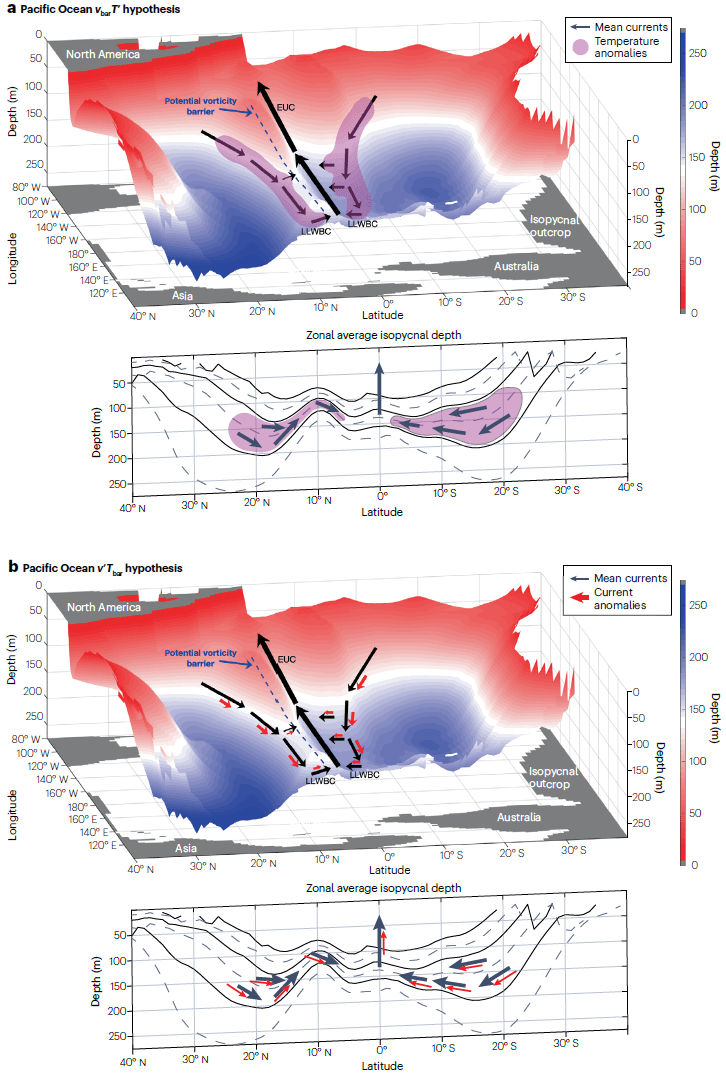Capotondi, A., McGregor, S., McPhaden, M., Cravatte, S., Holbrook, N., Imada, Y., Sanchez, S., Sprintall, J., Stuecker, M., Ummenhofer, C., Zeller, M., Farneti, R., Graffino, G., Hu, S., Karnauskas, K., Kosaka, Y., Kucharski, F., Mayer, M., Qiu, B., Santoso, A., Taschetto, A. S., Wang, F., Zhang, X., Holmes, R. M., Luo, J.-J., Maher, N., Martinez-Villalobos, C., Meehl, G. A., Naha, R., Schneider, N., Stevenson, S., Sullivan, A., van Rensch, P., & Xu, T. (2023). Mechanisms of tropical Pacific decadal variability. Nature Reviews Earth & Environment. https://doi.org/10.1038/s43017-023-00486-x

Subtropical cells influence on tropical Pacific decadal variability and two different mechanisms are illustrated schematically: (a) equatorward advection of temperature anomalies within the pycnocline (the vbarT’ hypothesis) is schematically illustrated in the upper panel as the advection of spiciness anomalies (pink shading) by the mean circulation (black arrows) on the 25.0kg mm−3 isopycnal surface. The lower panel depicts zonally averaged isopycnal depths (from 23 kg m−3 to 25.5 kg m−3 with a spacing of 0.5 kg m−3; solid lines: 23, 24 and 25 kg m−3; dashed lines: 23.5, 24.5 and 25.5 kg m−3), and the flow of equatorward spiciness anomalies along isopycnal surfaces. (b) As in (a), but for anomalous upwelling that can also drive TPDV via changes in the transport of the subtropical cells (the v’Tbar hypothesis) is schematically illustrated with mean (black arrows) and anomalous (red arrows) flows, which reveal how flow along isopycnal surfaces connects the subtropics to the tropics. Both mechanisms are proposed as potential contributors to TPDV. EUC, equatorial undercurrent; LLWBC, low-latitude western boundary current. [Adapted from Capotondi et al., 2023] (Figure provided by Caroline Ummenhofer)
